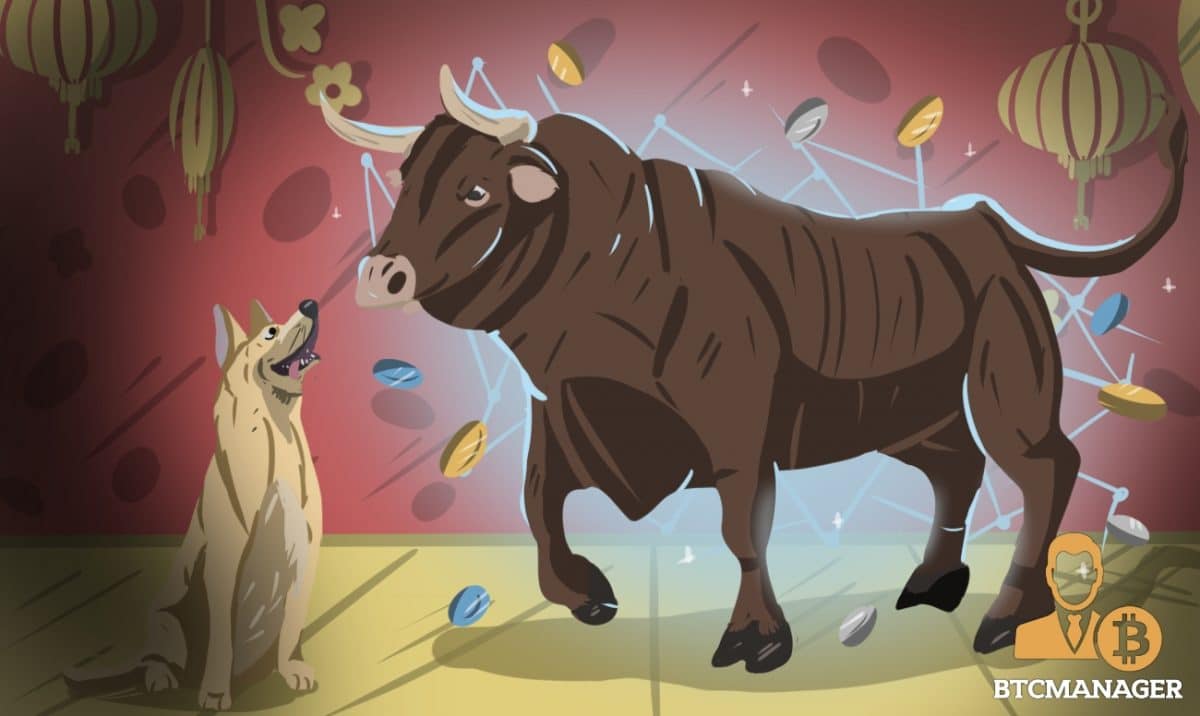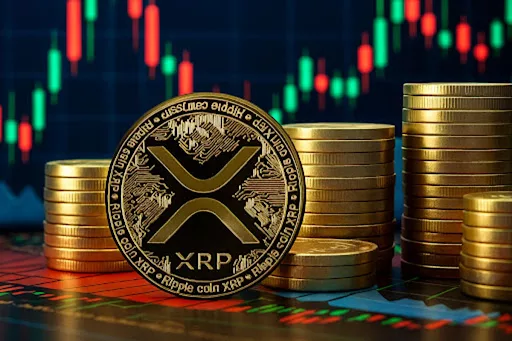Chinese Exchanges Thriving Post Chinese FUD (2018 The Year of the Dog…or Bull!)

The beginning of January 2018 saw a run on cryptocurrencies across many Chinese exchanges. This run was preceded by a major sell-off on these same platforms as volume plummeted puzzling many as to what happened. However, it seems the number of trades has begun picking up since the Chinese New Year has come and gone.
The Situation in China the Prior Six Months
From October 2017 until February 2018, China was releasing FUD regularly. The primary concern came when the Asian country stated they were going to come down hard on Chinese investors using both national and international exchanges.
This domestic crackdown on exchanges followed a September 2017 announcement of an Initial Coin Offering (ICO) ban.
China in a short period went from being one of the top traders of cryptocurrencies by volume to yet another nation adamantly opposed to it. Well, at least publicly they have stated they oppose it. Over time it is likely China will move to more adaptive regulation as the government becomes more involved via taxation and other ways to profit from mining and the crypto craze sweeping the world.
The underlying blockchain technology holds incredible value and China, along with any other countries attempting an outright ban, will find themselves facing an uphill battle. Many have compared blockchain technology, for better or worse, to the internet and the world’s adoption is equivalent to the 1993 bubble.
An Ominous Day in January
The People’s Bank of China (PBoC) continued scrutinizing domestic bitcoin and altcoin exchanges in January 2018. They released a warning statement detailing how they would oversee the ever-expanding industry.
The financial regulator’s offices in Shanghai and Beijing were to lead the charge informing exchanges they were interested in ensuring anti-money laundering (AML) laws and capital control mandates to which were being adhered. However, many of the exchanges took this as a very different message.
The Chief Operating Officer at Huobi thought the regulators had ulterior motives. Robin Zhu stated:
“The regulator wanted to grab a big picture of how significant cryptocurrency trading was in China – how does bitcoin work; where does the money come from; where does it go to; how do people make and lose money?”
It seems Zhu believes the government was using the auspice of “anti-money laundering” to inspect the exchange’s volume, importance, and practices. Of course, it is vital for a regulatory body to investigate the inner workings of exchanges, especially if it is to benefit the population. However, doing it under a guise to find out how to better tax or where funds are flowing seems a bit misleading.
The Central Bank requested both figures on total volume for coins as well as user numbers. This information is in addition to the significant amount of platform and network related data they the exchange earned on a regular basis.
Past inquiries have paved the way for the ultimate September clampdown which dramatically impacted Chinese exchanges.
On November 1, 2017, total volume was five of what it was on September 15, a little over a month earlier. This was the last day before the close of order-book trading (centralized exchanges). Even with suspicion toward the Chinese government major exchanges have continued a Westward and Eastward expansion.
Adoption is Key to Survival for Huobi, OKCoin, and Binance
The two most significant exchanges in China at the time of the initial ban on bringing fiat into the cryptosystem were Huobi and OKCoin. Since then, they have managed to shift their sights beyond China and remain ranked in the top ten total trading volume of any exchange. Their model has moved principally changing from fiat to crypto, to being solely a cryptocurrency and trading platforms: Huobi Pro and OKEx.
Huobi Group has even doubled their staff to over 400 between September and February. Zhu was adamant about how the regulatory landscape created:
“The shift to over-the-counter trading is an unexpected pivot to us. We had never anticipated that to be one of our business strategies.”
This pivot although unanticipated has still allowed Huobi to remain wildly successful. Recently they have opened new offices in Hong Kong, Singapore, South Korea and the U.S., thus signaling their focus on countries that already have a regulatory landscape in place.
The new offices have also provided outreach to many foreign partnerships. Huobi has partnered with Japan’s SBI Group to open a Japanese based exchange this March, along with a South Korean financial group to similarly open an exchange.
The U.S. based office is located in San Francisco and is focusing on research and blockchain startups with hints of another exchange to come.
The Huobi co-founder, when questioned about the U.S. exchange, stated, “Once we have fully understood the legal issue in the U.S., opening a new exchange remains to be the next phase of the plan.” This growth comes as a favorable move for the region, as the U.S. is still working through all the legal issues facing cryptocurrencies.
Pleasing Traders at Their Core
To truly be a fruitful exchange and build volume following months of China FUD adoption is critical. However, beyond adoption, it is essential to please already existing traders operating on your exchange. This retention can be accomplished in multiple ways, but primarily through providing incentives for loyalty while increasing the exchange’s revenue.
Exchange cryptos have become increasingly popular in that they provide a dividend and decrease the cost of trading on a specific exchange. Huobi, being based out of China, is implementing many of these strategies to remain relevant in such a hostile regulatory environment.
The exchange’s token sale was unique since it was not a standard Initial Coin Offering (ICO), allowing it to skirt the China ban. Instead of selling tokens to the public, Huobi gave them as a gift to the individuals that purchased service fee packages on their platform. This procedure allowed the exchange to collect the revenue for millions of trades up front.
In just two weeks, Huobi Tokens (HT), had raised $300 million in pre-paid service fees. Immediately following the launch of the HT, Huobi Pro announced a new exchange named HADAX where HT holders could vote for which assets they wanted to be listed using the provided tokens.
In this way, Huobi has found ways to incentivize traders to remain on their platform and continue to provide their input.
Binance Reaches the Big Leagues
Binance launched in July 2017 making it less than ten months old, which is crazy to ponder that one of the most prolific exchanges of our time was not in existence one year ago. Binance was founded by former top executives of OkCoin, Zhao Changpeng, and He Yi.
The initial funding came from Chinese-based venture capital firms Funcity and Blackhole. Binance’s base was located outside of mainland China providing it the perfect opportunity when the China FUD began.
Chinese investors sought to withdraw assets from Chinese based exchanges relocating them to platforms based overseas. He Yi stated, “The timing was perfect for Binance.”
The resulting hostility caused many Chinese exchanges to change their platform to OTC or open new exchanges in different countries. Binance did not have to do either but instead flourished beautifully. Binance regularly exceeds $2 billion in trading activity over 24 hour periods, according to Coinmarketcap.
This places Binance as the number one exchange based on trading volume on a regular basis.
Conclusion: Exchanges Are Thriving Again
What seemed like a precarious moment in the crypto world with China possibly banning and many countries regulating has resulted in a safer environment where some business models have pivoted. Exchanges have had to expand to foreign markets and relocate their central platform while also shifting some platforms to OTC.
Binance stood out from the pack and reaped the rewards for having been based outside of China’s mainland from the outset of the negative crypto-related news.
Other exchanges like OKCoin and Huobi shifted their models dramatically but also focused on expanding to different locales. The markets change regularly in the crypto space, much faster than they do in conventional business realms. Those companies that can stay ahead of the regulations while leading the technological blockchain charge will end up being successful beyond the standards most comprehend.
The Chinese New Year has also driven many traders back onto exchanges using VPNs (to hide their access from authorities), and the result has been an uptick in volume across most exchanges, especially those with connections to China.
Look for the next month to provide a boost in both altcoin prices and bitcoin prices as the Chinese population gets back into the flow of things following the Chinese New Year and conferences propelling the market to chasing its prior ATH.
To read the King’s prior articles, to find out which ICOs he currently recommends, or to get in contact directly with the King, you can on Twitter (@JbtheCryptoKing) or Reddit (ICO updates and Daily Reports).













